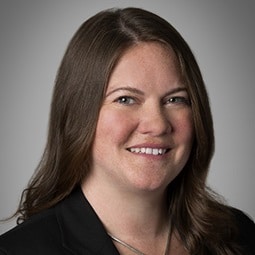Contributed by Dana Hall and Conray C. Tseng
Part III of III in an Examination of Recent Decisions Analyzing
the Enforceability of Make-Whole Provisions in Bankruptcy
This is the third in a series of three blog posts discussing recent decisions related to “no-call” provisions and prepayment premiums or “make-whole” provisions: In re Premier Entm’t. Biloxi LLC, In re Calpine Corp. (“Calpine II”), and In re Chemtura Corp. The underlying issues are whether a debtor may repay debt prior to the debt’s maturity where the debt instrument contains a provision prohibiting such repayment (i.e., a “no-call” provision) and whether such repayment in violation of a no-call or make-whole provision entitles the lenders to a claim in the debtor’s chapter 11 cases on account of the lenders’ expectation damages or liquidated damages, respectively.
As discussed in more detail in each post, much of the analysis turns on the specific language in the debt instrument, and, as such, much of the uncertainty related to no-call and make-whole provisions may be eliminated through more precise drafting of the debt instrument. Careful review by lenders and borrowers of these provisions prior to issuing debt may avoid uncertainty and costly litigation of the issues in a borrower’s subsequent bankruptcy case. Notably, drafters of make-whole provisions should be certain to specify that any prepayment penalty or, more appropriately termed, liquidated damages provision, applies despite automatic acceleration of the notes as a result of the bankruptcy filing.
In Chemtura, Judge Gerber of the United States Bankruptcy Court for the Southern District of New York considered the reasonableness of a settlement between the debtors and holders of two series of notes to resolve the debtors’ potential liability under a make-whole provision contained in the first series of notes and a no-call provision contained in the second series of notes. Judge Gerber, after briefly discussing the decisions in Premier Entm’t and Calpine II, determined that the settlement was reasonable because the debtor was solvent and the settlement values were reasonable given the circumstances and the ambiguity of the existing law at the time that the settlement had been entered into. Although Judge Gerber’s opinion sheds some light on several issues that have recently divided bankruptcy courts, the district court decision in Calpine II will likely serve as the guidepost for future decisions in the Second Circuit.
The Chemtura Notes and Settlement
Chemtura concerned two series of unsecured notes, one due in 2016 and the other due in 2026. The 2016 notes contained a make-whole provision providing that the debtors could, at their option, redeem all or any portion of the notes prior to the maturity date “at the Make-Whole Price plus accrued and unpaid interest to the date of redemption.” The 2026 notes, on the other hand, contained only a no-call provision providing that the notes could not be redeemed prior to their stated maturity date.
To resolve bondholder claims for the make-whole premium in the 2016 notes, and damages for alleged breach of the no-call provision in the 2026 notes, the debtors settled with the bondholders for 42% and 39% of the claimed amounts, respectively. The equity committee in the case challenged the proposed 9019 settlement on the basis that, following the Calpine II decision, the bondholders should not be entitled to any damages under either the make-whole or no-call provisions and that, therefore, the settlement was unreasonable.
Existing Precedent at Time of Settlement
At the time of the Chemtura settlement, the two leading decisions in the Southern District of New York discussing make-whole and no-call provisions were In re Calpine Corp. (“Calpine I”)and In re Solutia.
In Calpine I, two series of secured notes contained no-call provisions and make-whole provisions and a third series of secured notes contained a no-call provision. None of the notes required payment of a premium in the event of repayment pursuant to acceleration. The Calpine I debtors filed their chapter 11 cases and sought, pursuant to an emergency motion, to repay the notes and replace the existing debt with lower interest-rate debt while the no-call provisions were still in effect. Judge Lifland, consistent with Premier Entm’t, determined that the no-call provisions could not be specifically enforced and that claims premised on the no-call provisions could not constitute secured claims, but that breach of the no-call provisions would support the bondholders’ general unsecured claims for expectation damages. Judge Lifland did not consider the noteholders’ make-whole claims because the make-whole provisions were not yet triggered according to their own terms.
In In re Solutia, under similar circumstances to those in Calpine I, Judge Beatty rejected bondholders’ general unsecured claims for damages resulting from the debtors’ breach of a no-call provision and triggering of a make-whole provision contained in the indentures for certain secured notes. Judge Beatty determined that, with respect to the no-call provision, the bondholders had failed to establish conclusively the existence of such provision in the indentures. With regard to the make-whole provision, Judge Beatty determined that because the indentures provided for automatic acceleration, the bondholders had explicitly opted to give up their future income in return for an immediate right to collect. She opined that prepayment could only occur prior to maturity and, as a result of the automatic acceleration, there had been no prepayment. Significantly, Judge Beatty noted that the bondholders had failed to include any additional language requiring the payment of such prepayment premiums in the event of automatic acceleration.
Following the Chemtura settlement, the United States Bankruptcy Court for the Southern District of Mississippi and the United States District Court for the Southern District of New York rendered the Premier Entm’t and Calpine II decisions, respectively. Because those decisions were rendered after the date of the Chemtura settlement, Judge Gerber determined that he was not bound by either of the later decisions and would consider such decisions only to the extent that such decisions were persuasive.
State Law Enforceability of Make-Whole and No-Call Provisions
Prior to turning to the general enforceability of make-whole and no-call provisions in bankruptcy, Judge Gerber first focused his discussion on whether there had in fact been any breach of the no-call or triggering of the make-whole provisions in the first place. With regard to the 2016 notes, the entitlement to the make-whole premium was contingent upon the notes’ redemption prior to the “Maturity Date,” but the notes did not specifically address the payment of a premium upon the filing of a chapter 11 case and the resulting automatic acceleration to maturity. Nonetheless, Judge Gerber determined that, because “Maturity” and “Maturity Date” were defined separately in the indentures, any automatic acceleration of the notes would not advance the maturity date upon which the make-whole provision turned. As such, Judge Gerber found that the bondholders likely had a strong legal argument that payment of the notes upon their automatic acceleration in bankruptcy constituted a redemption prior to the Maturity Date.
With regard to the 2026 notes, Judge Gerber found that the noteholders’ position was slightly less tenable, but that the possibility of recovery could not be entirely foreclosed. The no-call provision in the 2026 notes was written as “Optional Redemption: None.” The notes, however, failed to anywhere define “Redemption.” Furthermore, the notes were ambiguous with regard to whether a bankruptcy filing accelerated the maturity date and thereby rendered the no-call provision inapplicable. Although the notes were ambiguously drafted and may not have resulted in the creation of the state law rights that the bondholders sought to enforce, Judge Gerber found that as a result of the legal uncertainty surrounding the no-call provision, a settlement for 39% of the asserted value of the claim was not unreasonable.
Enforceability of Make-Whole and No-Call Provisions in Bankruptcy
After considering the question of whether the make-whole and no-call provisions themselves created rights under state law, Judge Gerber turned to the issue of the enforceability of such provisions in bankruptcy. With respect to the specific performance of no-call provisions, Judge Gerber immediately dismissed the notion that such provisions might be specifically enforceable in bankruptcy. However, with regard to whether a noteholder might be entitled to a claim for damages resulting from the debtors’ breach of a no-call provision, Judge Gerber rejected Judge Daniels’s reasoning in Calpine II as overly broad. In Calpine II, Judge Daniels had determined that, because the debtor’s bankruptcy filing rendered specific performance of the no-call provision unenforceable and liability could not be incurred pursuant to an unenforceable contractual provision, the debtor could not have incurred any liability for repaying the notes. Judge Gerber, however, noted that although the “notion of specific performance is generally repugnant to bankruptcy policy, bankruptcy courts allow claims for damages for breaches of contracts they won’t specifically enforce with great frequency.” Judge Gerber favorably cited Premier Entm’t, a case in which the court granted the noteholders a general unsecured claim for expectation damages as a result of the debtors’ premature redemption of the notes.
Judge Gerber proceeded to discuss whether claims for breaches of no-call provisions and make-whole provisions constitute proxies for unmatured interest and should therefore be disallowed under section 502(b) of the Bankruptcy Code. As discussed in the decision, although the courts are divided, most courts to consider the issue have concluded that claims premised on make-whole and no-call provisions are not claims for unmatured interest. The general rationale underlying this view is that an obligation to pay a prepayment charge is triggered by the prepayment itself, and, as a result, such prepayment charge matures when the prepayment occurs. In dicta, Judge Gerber stated that the majority view effectively undermines the effect of section 502(b)(2) and that, in his view, a better interpretation of section 502(b)(2) is that it disallows unsecured claims for interest when such interest is “unmatured” as of the petition date. Under such a reading, in the event of a breach of a no-call provision, the right to the present value of interest would mature after the petition date, and a noteholder could not escape the prohibition against unmatured interest in section 502(b)(2) by distinguishing the right to recovery premised on the no-call from the right to unmatured interest.
Judge Gerber, however, limited his comparatively expansive interpretation of section 502(b)(2) by finding that it is at least arguable that such an interpretation of section 502(b)(2), predicated on the court’s equitable discretion, is “not applicable in solvent cases.” Judge Gerber admitted that there is a dearth of case law distinguishing the outcome in solvent versus insolvent debtor cases as a result of the minimal number of solvent debtor cases filed. As a result, he cited favorably to Premier Entm’t, a solvent debtor case in which the court awarded the noteholders an unsecured claim on account of expectation damages resulting from the debtors’ breach of a no-call provision in the indenture. Contrary to Judge Gerber’s expressed view, however, the court in Premier Entm’t had explicitly determined that, regardless of solvency, claims resulting from a debtor’s breach of a no-call provision did not constitute proxies for unmatured interest. Judge Gerber reasoned that, in the case of a solvent debtor, a recovery to noteholders no longer comes at the expense of other creditors and that undersecured and unsecured creditors should be permitted to recover interest, notwithstanding section 502(b)(2). Accordingly, Judge Gerber concluded that the effect of prepayment clauses in solvent debtor cases should be an issue of state law alone (i.e., if the prepayment clause is enforceable as a matter of state law), and bankruptcy law should not prohibit its enforcement.
Judge Gerber’s opinion seems to suggest that, in the case of a solvent debtor, the equities of the case may warrant a departure from the distribution priorities and claim limitations contained in the Bankruptcy Code. Notwithstanding this discussion, Judge Gerber nonetheless conceded that, legally, the issue of whether otherwise enforceable make-whole provisions constitute a proxy for unmatured interest is “still open.” Calpine II did not directly address the 502(b)(2) implications of claims premised on a breach of a make-whole provision because the court, in that case, had determined that the make-whole provisions, by their own terms, had not been triggered. Moreover, it is worth noting that the Third Circuit’s decision in In re PPI Enters.,which capped a lessor’s damages claim under section 502(b)(6) even though the debtor was solvent and only equity benefited from the capped claim, runs contrary to Judge Gerber’s reasoning in Chemtura. Perhaps, unlike the S.D.N.Y., the Third Circuit will disregard the solvent/insolvent distinction for purposes of applying section 502(b)(2) to damages arising out of a debtor’s breach of no-call provisions or triggering of make-whole provisions.
Conclusion
In the case of a solvent debtor, Judge Gerber takes a position closer to that taken by Judge Olack in Premier Entm’t than that taken by Judge Daniels in Calpine II. In the case of an insolvent debtor, however, Judge Gerber shifts toward the Calpine II view – stating his belief that in such cases, the prohibition set forth against unmatured interest in section 502(b)(2) of the Bankruptcy Code would likely bar any recovery on account of a debtor’s breach of make-whole or no-call provisions.
Although Chemtura sheds some light on the likely outcomes in solvent and insolvent debtor cases, the less bondholder-friendly decision in Calpine II will likely guide future S.D.N.Y. decisions in this field. Calpine II foreclosed noteholders from obtaining an unsecured claim for expectation damages resulting from a debtor’s breach of a no-call provision, but left open the issue of the appropriateness of awarding a claim for damages in the event that a debtor triggers an otherwise enforceable make-whole provision. What is clear from all the decisions to have considered these various issues is that, particularly in the case of make-whole provisions, careful drafting concerning the effect of automatic acceleration may improve noteholders’ chances of a later recovery in the event that the issuer seeks protection under the Bankruptcy Code. Additionally, the issue of whether no-call and make-whole provisions constitute proxies for unmatured interest continues to divide courts and may result in vastly differing outcomes among jurisdictions.
Printed from
Weil Restructuring Blog

|
|
|
In re Chemtura Corporation: An Analysis of the Enforceability of Make-Whole and No-Call Provisions in the Southern District of New York
Copyright © 2024 Weil, Gotshal & Manges LLP, All Rights Reserved. The contents of this website may contain attorney advertising under the laws of various states. Prior results do not guarantee a similar outcome. Weil, Gotshal & Manges LLP is headquartered in New York and has office locations in Boston, Brussels, Dallas, Frankfurt, Hong Kong, Houston, London, Miami, Munich, New York, Paris, Shanghai, Silicon Valley and Washington, D.C.
|



















